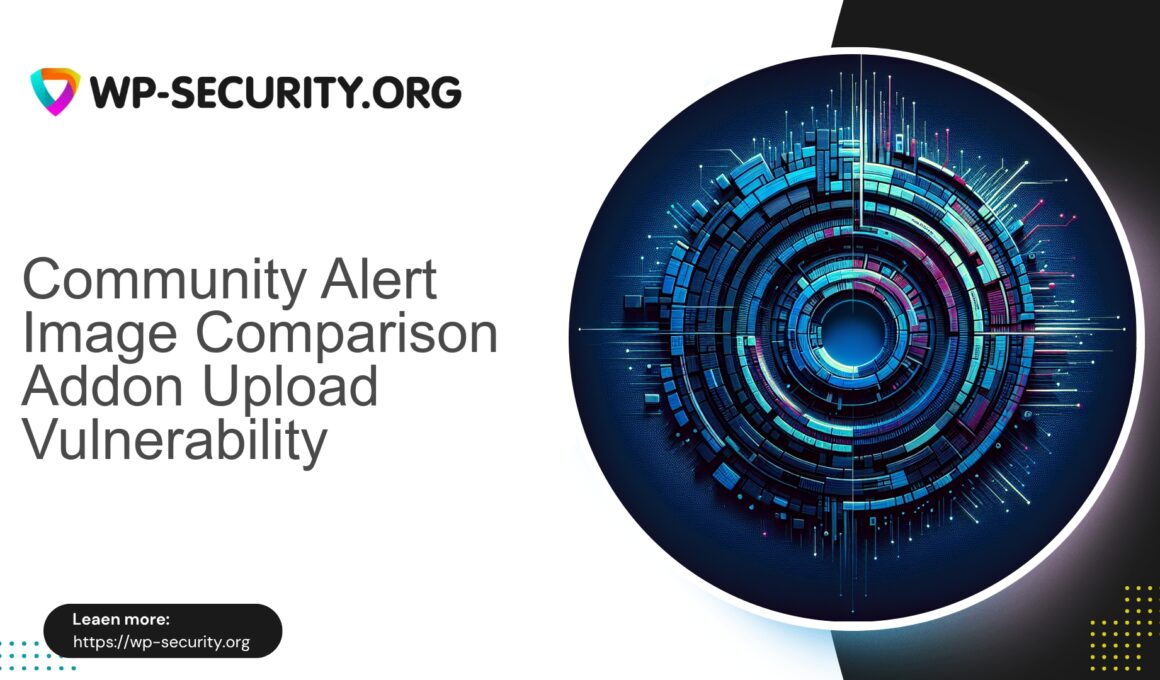| Plugin Name | Image Comparison Addon for Elementor |
|---|---|
| Type of Vulnerability | Authenticated file upload vulnerability |
| CVE Number | CVE-2025-10896 |
| Urgency | High |
| CVE Publish Date | 2025-11-04 |
| Source URL | CVE-2025-10896 |
Security Advisory — Image Comparison Addon for Elementor (CVE-2025-10896)
Author: Hong Kong Security Expert (incident response & web application hardening)
Executive summary
An authenticated file upload vulnerability (CVE-2025-10896) has been disclosed in the Image Comparison Addon for Elementor. The flaw allows authenticated users with the ability to manage plugin content (commonly contributors, editors, or administrators depending on site configuration) to upload files that may be executed on the server, potentially leading to remote code execution or persistent web shells. The issue is rated High and requires prompt attention.
Technical details (concise)
- Vulnerability type: improper server-side validation of uploaded files in an authenticated context.
- Impact: arbitrary file upload that can lead to code execution if files are accessible/executable on the web server.
- Attack vector: authenticated user uploads a crafted file (for example, a PHP file or other executable payload) that is stored in a web-accessible location.
- Preconditions: attacker must have an account with sufficient privileges to reach the plugin’s upload functionality; severity increases on sites where contributor/editor roles are more permissive or where user registration is open.
Observed impact and risk
If exploited, an attacker can place executable content on the server and then trigger it via HTTP requests. This can yield site takeover, data theft, persistent backdoors, and lateral movement within hosting accounts. For multi-site or shared hosting environments common in Hong Kong and the APAC region, the risk extends to neighbouring sites on the same account if proper isolation is not enforced.
Detection indicators (what to look for)
- Unexpected PHP or other executable files appearing under wp-content/uploads, plugin folders, or temporary directories.
- Recent file modifications in upload directories by low-privileged accounts.
- Unusual HTTP requests to static upload locations that return 200 and include PHP output or unusual query parameters.
- Suspicious filenames such as random strings, image.php, upload.php, or files with double extensions (e.g., image.jpg.php).
- Web server logs showing POST requests to plugin endpoints followed by GET requests to newly created files.
Immediate mitigations (practical & vendor-neutral)
Apply these steps quickly if you cannot immediately update the plugin:
- Disable or remove the plugin from the site until a patched release is installed. This is the most reliable short-term mitigation.
- Restrict upload access: ensure only trusted administrator accounts can reach plugin upload features; review role/capability mappings for contributors and editors.
- Block PHP execution in uploads: ensure your web server does not execute scripts from wp-content/uploads. For Apache, use an .htaccess rule in the uploads directory to deny execution of PHP files. For Nginx, configure location rules to deny processing of PHP under uploads.
- Harden file permissions: set correct ownership and minimal permissions (e.g., files 644, directories 755) and ensure the web server user cannot create executable files outside intended paths.
- Scan for indicators: look for unexpected files in uploads and plugin directories; remove any confirmed malicious files and preserve copies for forensic analysis.
- Rotate credentials: reset administrator passwords, API keys and any FTP/SFTP credentials that might have been exposed.
- Monitor logs closely: watch for suspect POSTs to plugin endpoints and subsequent GETs to uploaded files.
Longer-term remediation
- Apply the vendor-supplied patch or update to the fixed plugin version as soon as it is available. Validate plugin source and integrity before reinstalling.
- Adopt the principle of least privilege for WordPress roles; restrict file-management abilities to a minimal set of trusted administrators.
- Enforce strong separation between web and upload directories; consider using object storage (S3 or equivalent) for user-uploaded assets with non-executable storage policies.
- Implement intrusion detection on logs and file integrity monitoring to detect future unauthorized changes quickly.
Forensic notes (if compromise suspected)
- Isolate the affected site: take it offline or place it in maintenance mode to prevent further exploitation while preserving evidence.
- Create full filesystem and database snapshots before remediation, preserving timestamps where possible.
- Collect web server access and error logs around the window of suspected activity for correlation.
- Search uploads and plugin directories for web shell signatures and examine modification times and uploader accounts.
- If persistence is found, perform a full rebuild from known-good sources and restore content only after thorough validation.
Responsible disclosure & timeline
CVE-2025-10896 was published on 2025-11-04. Site owners should follow the vendor’s advisory for the official patch timeline and release notes. If you are managing multiple sites, prioritise public-facing and high-privilege installations first.
Final words from a Hong Kong security practitioner
In Hong Kong’s dense digital environment — where sites often change hands and developer workflows are fast — authenticated upload vulnerabilities are particularly dangerous because they can be exploited by internal or low-privileged accounts. Practical, immediate actions (plugin removal, blocking execution in uploads, and targeted log review) reduce the window of exposure. Treat this incident as a prompt to review user roles, deployment hygiene, and backup/restore procedures.
